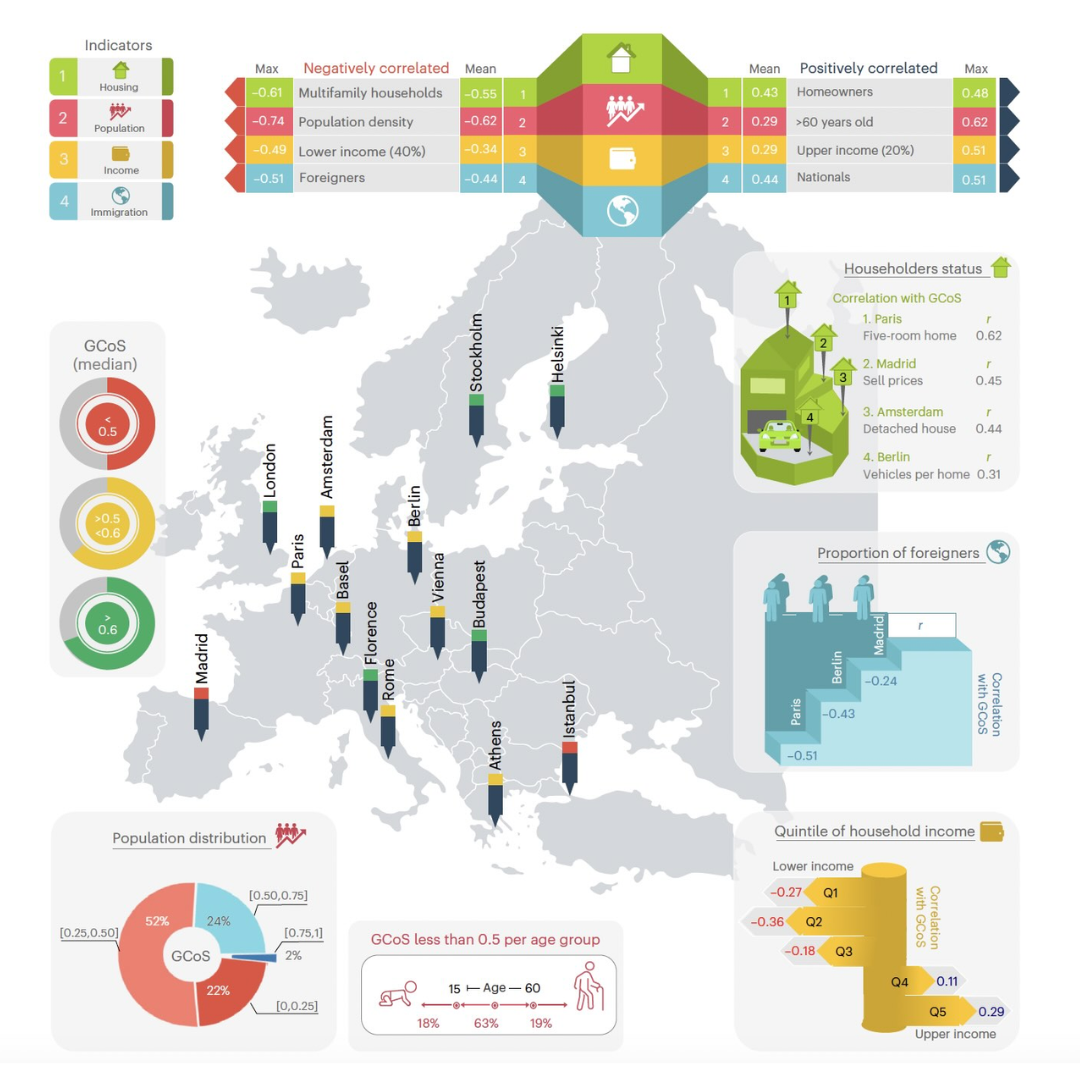- Publication date

According to a new study involving researchers from around Europe, including Italy’s CMCC and the National Research Council (CNR), urban areas across Europe are home to high levels of social inequality when it comes to granting access to green spaces, which are considered among the most effective solutions to mitigating the worse effects of heatwaves. The study, published in Nature Cities, analyzes fourteen major European urban areas.
Heatwaves in Europe are on the rise, with 57% more people exposed to them in the decade from 2010 to 2019 compared to the preceding ten-year period. In densely populated areas, the effects of these extreme heat events are particularly pronounced due to urban features that lead to what is known as the urban heat island effect. In fact, heat stress resulting from heatwaves is the major cause of climate-related premature deaths in Europe.
Among the most effective solutions is the development of urban green infrastructure which is one of the best-suited nature-based solutions to mitigate overheating in urban areas by providing a variety of ecosystem services, including a cooling effect via shade and evapotranspiration.
However, the extent of citizen access to green cooling solutions in Europe’s urban areas is still an open question.
A new study published in Nature Cities – involving researchers from across the EU, including Italy’s Euro-Mediterranean Center on Climate Change (CMCC) and the National Research Council (CNR) – uses socioeconomic indicators to address the environmental injustice underpinning access to green cooling solutions in fourteen major European urban areas, including Florence and Rome. For the study, an innovative approach was developed to assess citizen exposure to heat stress based on a combination of micrometeorological data, satellite data, and simulation models.
“In all the urban areas analyzed, lower-income residents, tenants, immigrants and the unemployed, experience more difficulties accessing green cooling services due to the unfavourable urban and social layout of many European cities,” says CMCC researcher and co-author of the study Giacomo Nicolini. In contrast, upper-income residents, nationals and homeowners experienced above-average cooling provision.

Infographic showing the relationship between the green cooling services index and the indicators of housing, population, income and immigration. Source: Rocha, A. D. et al. Nat. Cities.
Some of the cities included in this study were selected because they host sites that measure energy and greenhouse gas exchanges, such as the Ximenian Observatory in Florence, managed by the CNR, which has been providing measurements for almost 20 years and is part of the ICOS (Integrated Carbon Observation System) network, the point of reference for European infrastructure when it comes to the carbon cycle.
Both the CMCC and the CNR are among the main actors in the collection and processing of data for the ICOS ecosystem network (for the Italian network ICOS Italia includes 24 stations and hosts the Ecosystem Thematic Center), managing several sites and the data processing and validation chain for the entire network.
“This study shows us that differing capacities for adapting to climate change are not just a matter that concerns high- and low-income countries, but is also about the social differences within the wealthy regions and cities of Europe. Mitigative interventions based on nature-based solutions must take into account the social dimension as well as the environmental one, with integrated and multidisciplinary analyses of high spatial detail,” concludes Beniamino Gioli, researcher at CNR Florence’s Institute of Bioeconomy.
For the original images and article, visit the ICOS website, here.
Read the full research paper here: Rocha, A.D., Vulova, S., Förster, M. et al. Unprivileged groups are less served by green cooling services in major European urban areas. Nat Cities (2024). https://doi.org/10.1038/s44284-024-00077-x
This press release was originally published on the CMCC webpage: https://www.cmcc.it/article/in-european-cities-heatwaves-hit-the-most-vulnerable.
